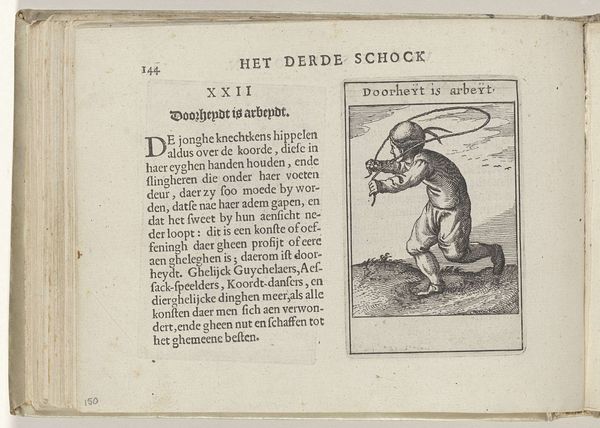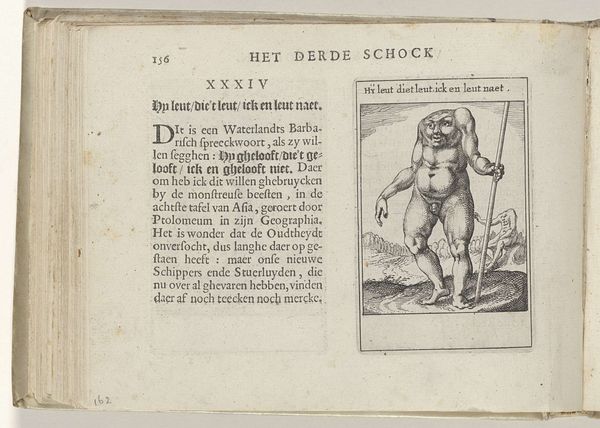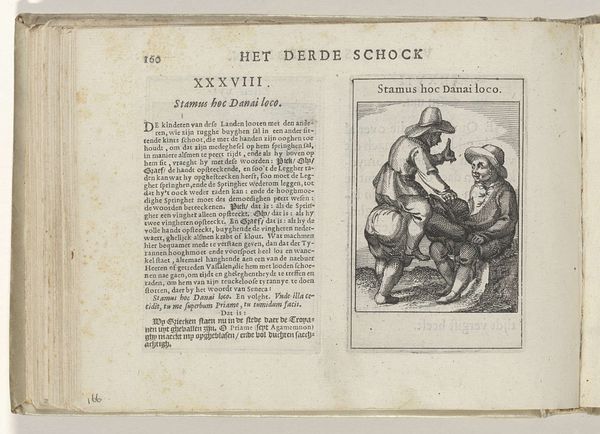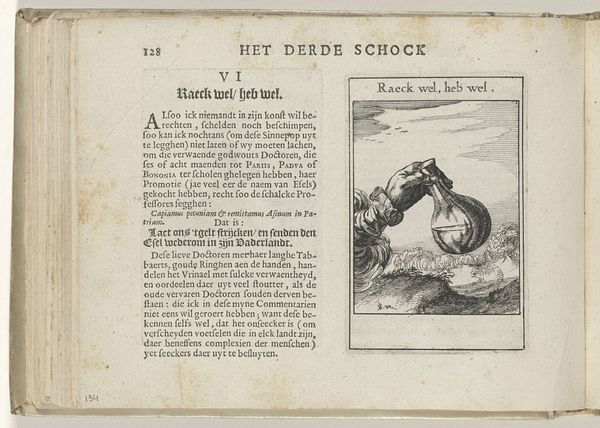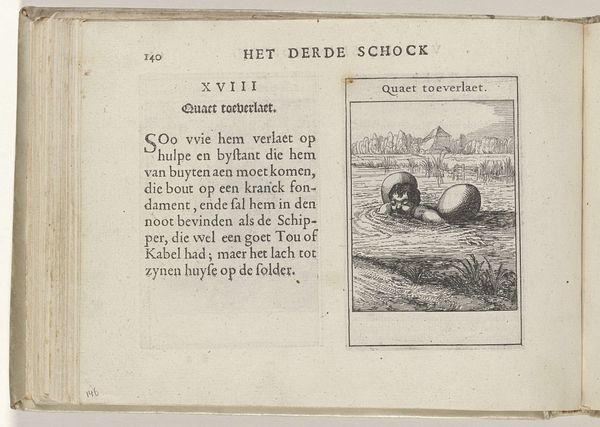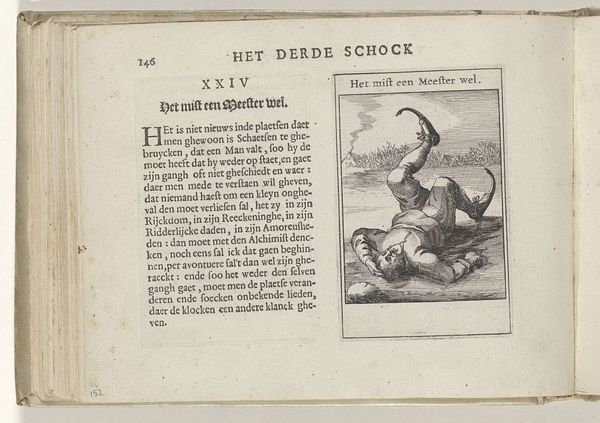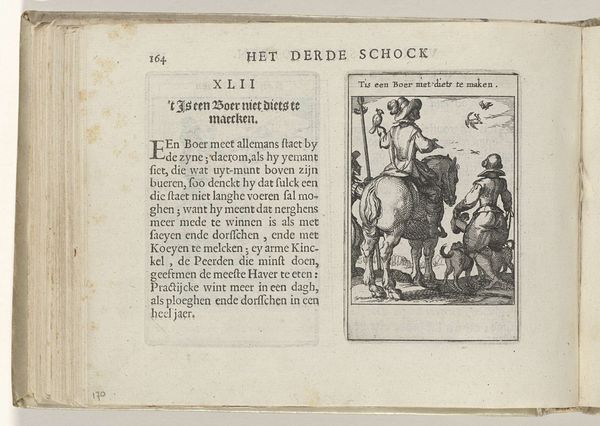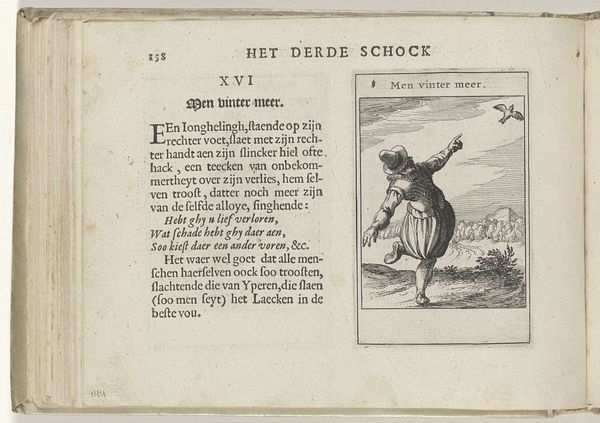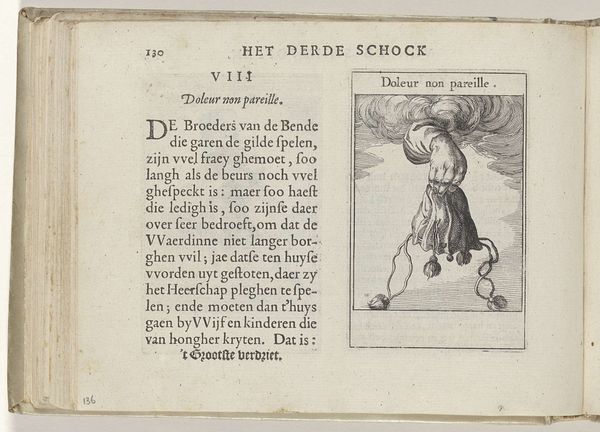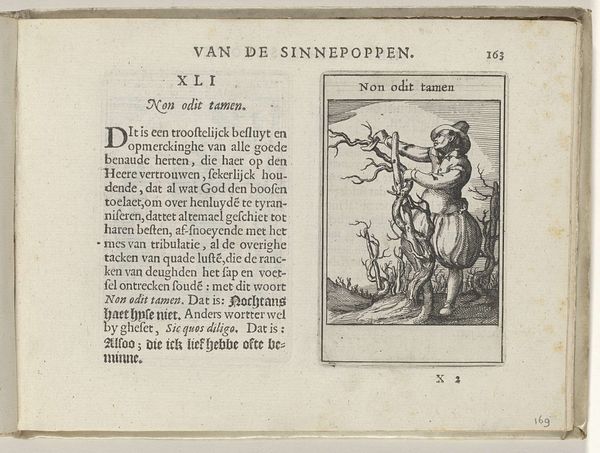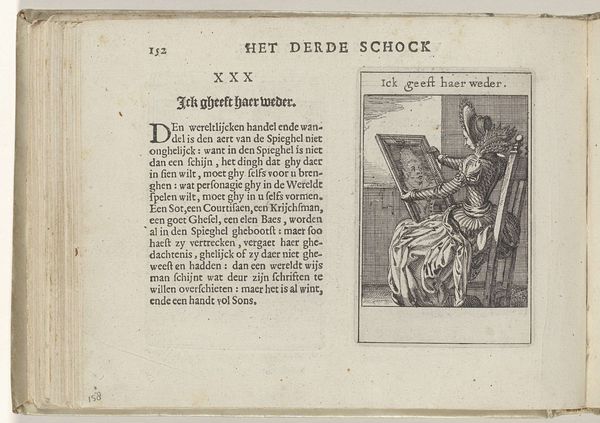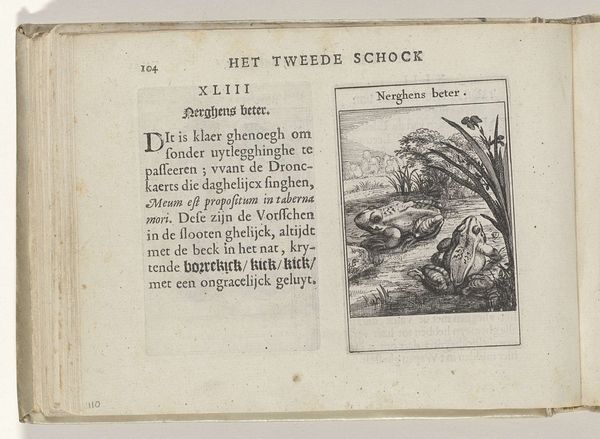
print, engraving
#
dutch-golden-age
# print
#
landscape
#
figuration
#
genre-painting
#
engraving
Dimensions: height 137 mm, width 188 mm, height 95 mm, width 60 mm
Copyright: Rijks Museum: Open Domain
Editor: This intriguing print, "XXVIII Wie weet waer," created by Roemer Visscher in 1614, and held at the Rijksmuseum, depicts a solitary fisherman. The image possesses a quiet simplicity; its black and white lines forming a serene waterside scene. The human figure seems dwarfed by the natural landscape and the detail and depth captured is quite subtle for such a simple piece. How do you interpret this work from a formalist perspective? Curator: Indeed, the stark contrast and finely etched lines invite close inspection. Focus on the relationship between the figure and the ground. Note how the engraver uses line variation to create depth and texture – the dense hatching suggesting foliage, the sparser lines implying sky. The figure is tightly compacted and defined. Observe, too, the deliberate arrangement of shapes, and consider the compositional balance created by the diagonal line of the fishing rod mirroring the horizon. The print’s meaning emerges less from anecdotal details and more from these arrangements. Editor: So, the human form acts in concord with the scene, not dominating? Does the image then speak for itself? Curator: Precisely. We should resist seeking meaning solely through symbolic readings. It is much more fruitful to deconstruct the visual system by identifying recurring visual elements in Roemer’s compositions to infer about possible relationships between this print, other engravings in the book it was a part of, and the artist's full body of work. Is he depicting an individualized scene or presenting a type of individual in such a space? Editor: That's fascinating. So instead of asking "What does it *mean*?", we should be asking "How does it *work*?". Thank you, this print presents endless possibilities when considering formalism. Curator: I'm happy to offer such possibilities. A deep understanding of formal composition can lead to far greater insights when reflecting on how we interpret visual works.
Comments
No comments
Be the first to comment and join the conversation on the ultimate creative platform.
